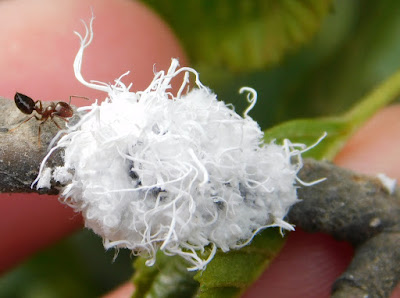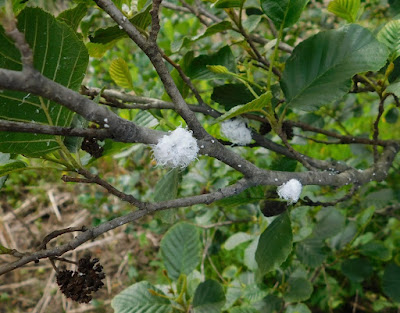One of my favorite restaurants anywhere is Berardi’s Restaurant in Huron, Ohio, just about a fifteen-minutes’ drive north from where Sue grew up. It’s a restaurant with a long history in northern Ohio. It started in 1942 as a French fry stand at Sandusky’s world-famous amusement park, Cedar Point. In 1978, the park stopped allowing independent food concessionaires on its property, so Berardi’s opened a sit-down restaurant in nearby Huron in 1979. (There is another Berardi’s Restaurant in Sandusky, which opened in 1978; it has a slightly different, more Italian-focused menu.) Both are run by third and/or fourth-generation members of the Berardi family. The service is exceptional, even when it’s busy.
Although what I’m about to crow about focuses on traditional and ethnic dishes, I should point out that Berardi’s in Huron keeps it fresh by offering a variety of newer, healthier dishes, like a quinoa breakfast, gluten-free options, fruit and nut salad, grilled salmon and asparagus salad, chicken or tuna salad fruit plates, breakfast options with lots of veggies, and lots more.
I’ve been visiting with Sue’s family in northern Ohio since 1994, and it wasn’t until May 9, 2013, that I finally got to have a meal at Berardi’s. We’d been driving past the place for ages, and I’d always wondered what it was like in there. Hmm. Look at all those cars in the parking lot; that place must be good! One afternoon, when we were sitting around wondering what to do for a meal, I said, “How about that place up by Cornell’s—Berardi’s, or whatever?” They were like, “Oh, yeah. We could go there.” Then they were surprised: “Wait, you’ve never been there? We’ve never taken you to Berardi’s???”
I think Sue’s family had somehow forgotten it existed. Maybe they thought it was too snooty (Sue’s dad had an aversion to cloth-napkin, “fancy” places), or too pricey? . . . But it really isn’t. And it’s got something for everyone. Anyhow, we went; we were all delighted; and so we’ve been going back since then. It’s become a favorite place for the whole family to get together. Whether for breakfast, lunch, or supper, Sue and I try to find a way to dine there at least once per trip.
Indeed, Sue’s family came to realize that Berardi’s is one of my “happy places.” One year when we were in Ohio for my birthday, they conspired to surprise me with a trip to Berardi’s. (I could tell from a mile away that’s where we were heading, but I played along. Surprise! Sue’s mom and dad were so pleased to see me happy! Yayyy! Ber-aaarrrrr-di’s!!)
There are so many interesting dishes at Berardi’s. It’s basically a homestyle cooking restaurant—Americana—but it’s certainly different than what a similar restaurant here in Missouri would offer.
- There’s a lot more seafood (which makes me ponder that many Missourians, indeed, are skeptical of seafood, unless it’s fried catfish). Especially, being less than a mile south of the Lake Erie shore, Berardi’s proudly offers the tasty fresh yellow perch and walleye so famous from that body of water.
- There are a lot of Italian dishes, served matter-of-factly, because the ethnic Italian Berardis are surrounded by plenty of other Italian-derived people in the area, so this is just good home-cookin’, not “ethnic” food from a “foreign land,” like it is so often in Missouri. (In Missouri, we serve southern food and barbecue, like cornmeal-breaded fried catfish and BBQ porksteaks, as if it were normal food that everyone eats everywhere.)
- Likewise, there are a lot of eastern European dishes that we rarely see here in Missouri. Sauerkraut balls, pierogis, and haluski (cabbage and noodles with kielbasa), chief among them. You may also encounter specials like stuffed bell peppers and cabbage rolls.
- Of the straight-up Americana dishes, I have to note that liver and onions is on the menu; also a tuna melt, a “mile-high meatloaf,” and an open-faced roast beef and gravy sandwich. The latter two were big favorites of Sue’s dad. These old-fashioned blue-plate diner dishes have pretty much disappeared from around here in Missouri.
- Berardi’s is also famous for its homemade pies and cookies. Lots of people get these to go; they beckon to you from a cold case near the entryway.
I won’t go into the whole menu; you can look that up online. But I do want to mention a few favorite dishes—especially things we can’t get around here in Missouri.
- The famous Berardi’s French fries. “Thick, hand cut, made to order.” Many people enjoy these with a bit of malt vinegar, but good-ol’ ketchup is also perfect. These are exactly the same as they were made at Cedar Point back in the day. Sue says they taste exactly the same. A blast from the past! The only difference is that now they’re served on plates instead of in a paper cone like they did at Cedar Point.
- Sauerkraut balls. “Hand breaded and stuffed with cream cheese, sauerkraut, and sausage. Served with bistro sauce.” We here in Missouri are missing out on a beautiful thing by not having sauerkraut balls. These are so good, they’re available everywhere in northern Ohio. Like, at bars. Even at goofy golf places, soft-serve ice cream stands, and bowling alleys. You hear that, German-heritage Missourians? Sauerkraut balls are so delicious, they’re even served at bowling alleys. At bow-ling-al-leys!. Naturally, the ones at Berardi’s are in a higher class, having been made fresh instead of prepackaged frozen things supplied by a food service.
- Potato knoephle and seafood bisque. These soups are always on the menu, and both are perfect. The knoephle (pronounced NEFF-luh, though they’ll know what you mean if you say NIP-fluh, NOP-fluh, K’nop-flee, K’neff-lee, or any other thing that sounds close) is a hearty, chicken-broth-based soup with potatoes, dumplings, and onions. The seafood bisque is creamy and velvety, with clams, shrimp, and lobster. They keep containers of these soups in a refrigerator next to the cash register, because so many people pick them up to go.
- Lake Erie yellow perch and Lake Erie walleye. Available as dinners or in sandwiches. Sue’s mom, who grew up on an island in Lake Erie, always gets the perch and relishes every single bite. Berardi’s fries it to perfection and serves it, as nature intended, with French fries and coleslaw.
- Pierogies. I’ll bet many Missourians have never heard of these. Pierogies (peer-OH-ghees) are like big, mild raviolis, stuffed with mashed potato and cheddar cheese. They’re boiled in water until cooked, then they are sautéed in butter and grilled onions and served with kielbasa and sour cream. Berardi’s serves them with a side of applesauce. It’s sort of like potato pancakes. Look for pierogies in the freezer section of supermarkets, or find recipes online. There are many traditional stuffings, including prunes, apples, cabbage, ham, sausage, bacon, sauerkraut, and more.
- Cabbage and noodles (haluski). My favorite! “Homemade cabbage and [egg] noodles topped with kielbasa and sour cream. Served with applesauce.” . . . And a piece of garlic toast. I honestly don’t want to know how much butter these are swimming in—I’ve seen traditional recipes online, and it frightens me. When I make it at home, I halve the amount of oil, and then use half olive oil and half butter. But eating at Berardi’s is a treat, and I relish every bite—which, given the ample serving, takes me about halfway through the dish. The rest of the meal comprises lunch the next day! It’s simple, hearty home cooking. So good!
While I’m at it, I should mention the joys of breakfast at Berardi’s. Until recently, we have never been there for breakfast, since we have always had breakfast made in the kitchen of Sue’s mother. (Did I mention how much she loves the Lake Erie yellow perch?)
But since she has moved into an assisted living place, Sue and I have occasionally gotten breakfast at Berardi’s. So a few comments are in order.
- First, you can order a wide variety of traditional breakfast foods—the old-fashioned heavy favorites such as sausage gravy on biscuits, the usual variety of steak and eggs, omelets, pancakes, sausage, bacon, homefries, corned beef hash, and even creamed chipped beef on toast.
- But there are a variety of newer, fresher, healthier ideas: bran muffins, an “oatmeal breakfast” with a choice of topping, fresh fruit, and a bran muffin,” “fresh fruit, yogurt, and muffin,” and quinoa patties. And here’s a nice idea: a breakfast called “the uno,” which has one of each: a single pancake or piece of French toast, a single egg cooked to order, and a single piece of bacon or sausage. Along the same lines, there’s also the “1-1-1,” where you get a single egg, a single piece of bacon or sausage link, and a single slice of toast and homefries. I love the idea of scaling down the quantity of the food while keeping the variety!
- If you visit Berardi’s for breakfast in the fall and early winter—during “pumpkin-spice-everything” season—I encourage you to get the pumpkin spice pancakes, because they’re the bomb! Tender, tasty, and buttery, “here for a limited time only.”
- Finally, the coffee at Berardi’s is organic and fair-trade.
What’s not to like about this place? I hope that if you ever find yourself in northern Ohio, that you make it a point to eat at one of the Berardi’s restaurants. I know you’ll love it!
Berardi’s Restaurant
218 Cleveland Rd. East
Huron, Ohio 44839
419-433-4123
Full disclosure: The owners of Berardi’s in Huron are personal friends of Sue’s niece, but though I’ve met them a few times and told them how much I adore their restaurant, I certainly don’t receive or expect personal favors from them. In their business, they know tons of people, and I’m sure I’m just another fan.




































